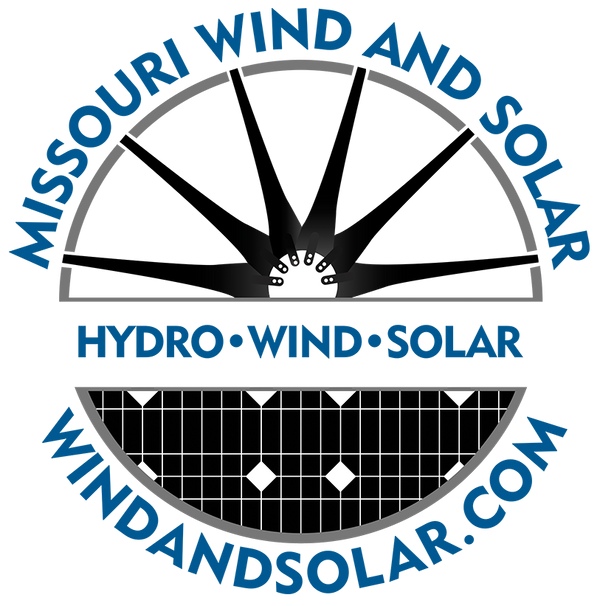Many people ask if they need a blocking diode for their wind turbines and/or solar panels, but they’re not always necessary. Read below to determine if your DIY project requires a blocking diode.
Blocking Diode Installation Diagram

Do I need a diode for my wind turbine?
You will only need a blocking diode if your motor has brushes (some electric motors like the Ametek have brushes). The Missouri Wind and Solar Freedom™ and Freedom II™ PMG, Super Dual PMA, and Victory PMA are brushless and do not require a diode.
- If the turbine has brushes then yes, you need a diode.
- If it is DC motor, then yes you need a diode.
- If it is 3 phase AC then you need a 3 phase bridge rectifier (like a car alternator), if it is not already included.
Check with your turbine supplier for more info.
Do I need a diode for use with my solar panel?
Solar panels require a diode to prevent current flow from the battery to the solar panel when there is little or no light. For solar panels, a 3 amp or 8 amp diode can be used for this purpose. You might also want to install a bypass diode to prevent a shaded panel from drawing down other panels. These same diodes can be used. Place diodes in an ABS project box.
If you are using a solid state charge controller, you may not need a blocking diode.
Does a diode come with your charge controller?
No, diodes are specific to your application. The size and placement of the diodes depends on your site and energy sources in use. Different turbines require different types of diodes/rectifiers (and some do not require any). Solar panels require a different type of diode.
Where do I put the diode for my solar panels?
For solar panels, we recommend you put one blocking diode on each solar panel, inside an ABS project box. The diode needs to have a voltage and amperage rating above that of the panel.
Example: If you have two 175 watt panels each at 42 volts, you will need (two) 8 Amp, 45-volt diodes. (175 watts / 42 volts) = 4.16 amps. + (plus) side of the diode goes to the PV panels + (plus) terminal.
Where do I put the diode or rectifier for my wind turbine?
Blocking diodes and rectifiers go between your wind turbine and the battery bank. If you have a disconnect switch between your turbine and battery bank, then you can put your diode/rectifier on either side of this switch. Keep in mind if you have a 3 phase turbine, you need a 3 phase switch if you place the rectifier on the battery side of the switch.
Which side is the plus side of a diode?
Smaller diodes have a silver, gray, black or white band on the cathode (negative side.) The positive side is generally unmarked.
Blocking Diode Direction

Larger stud diodes will show the arrow and line –>|–. For the symbol above: The negative side is on the right. Think of it as the current can go with the arrow, but not the other way since it hits a wall.
What direction does my diode go?
The positive (anode) side of the diode always goes towards your energy source, this is where your energy is coming from. So for a solar PV panel, wind turbine, hydro etc., the anode goes on (or towards) the energy source’s positive lead. No diode is required on the negative lead.
What size diode do I need?
Your diode needs to be somewhat larger than the current that it will be handling. For solar panels, the 3 amp and 8 amp diodes can be used for this purpose. If your solar panel will not exceed 2 1/2 amps of current, then the 3 amp version is fine. An 8 amp diode is acceptable for panels up to about 7 1/2 amps.
Solar panels with more charge current than this would require a larger diode such as our 85 amp diode. This larger diode can be placed in-line with the common positive wire coming from your solar panels to your charge controller to handle multiple panels at one time. Please note: This larger diode may require a heat sink if it will be used for higher power applications (above 15 amps or so).
